Etymology
Iowa derives its name from the Iowa people, Ioway people, a Chiwere language, Chiwere-speaking Sioux, Siouan Nation who were once part of the Ho-Chunk Confederation that inhabited the area now corresponding to several Midwest states. The Ioway were one of the many Indigenous peoples of the Americas, Native American nations whose territory comprised the future state of Iowa before the time of European colonization.History
Prehistory
Early colonization and trade, 1673–1808
 The first known European explorers to document Iowa were Jacques Marquette and Louis Jolliet who traveled the
The first known European explorers to document Iowa were Jacques Marquette and Louis Jolliet who traveled the War of 1812 and unstable U.S. control
Fort Madison, Iowa, Fort Madison was built to control trade and establish U.S. dominance over the Upper Mississippi, but it was poorly designed and disliked by the Sauk and Fox, many of whom allied with the British, who had not abandoned claims to the territory. Fort Madison, Iowa, Fort Madison was defeated by British-supported Indigenous people in 1813 during the War of 1812, and Fort Shelby (Wisconsin), Fort Shelby in Prairie du Chien, Wisconsin, also fell to the British. Black Hawk (chief), Black Hawk took part in the siege of Fort Madison. Another small military outpost was established along the Mississippi River in present-day Bellevue, Iowa, Bellevue. This poorly situated stockade was similarly attacked by hundreds of Indigenous people in 1813, but was successfully defended and later abandoned until settlers returned to the area in the mid-1830s. After the war, the U.S. re-established control of the region through the construction of Fort Armstrong, Illinois, Fort Armstrong, Fort Snelling in Minnesota, and Fort Atkinson (Nebraska), Fort Atkinson in Nebraska.Indian removal, 1814–1832
The United States encouraged settlement of the east side of the Mississippi and removal of Indians to the west. A disputed Treaty of St. Louis (1804), 1804 treaty between Quashquame and William Henry Harrison (then governor of the Indiana Territory) that surrendered much ofU.S. settlement and statehood, 1832–1860
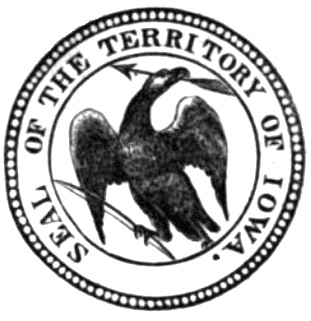
 The first American settlers officially moved to Iowa in June 1833. Primarily, they were families from Ohio, Pennsylvania, New York (state), New York, Indiana, Kentucky, and Virginia who settled along the western banks of the
The first American settlers officially moved to Iowa in June 1833. Primarily, they were families from Ohio, Pennsylvania, New York (state), New York, Indiana, Kentucky, and Virginia who settled along the western banks of the Civil War, 1861–1865
Iowa supported the Union during the American Civil War, Civil War, voting heavily for Abraham Lincoln, though there was an antiwar "Copperheads (politics), Copperhead" movement in the state, caused partially by a drop in crop prices caused by the war. There were no battles in the state, although the Battle of Athens (1861), Battle of Athens, Missouri, 1861, was fought just across the Des Moines River from Croton, Iowa, and shots from the battle landed in Iowa. Iowa sent large supplies of food to the armies and the eastern cities.Iowa Official Register, Volume No. 60, page 315 Much of Iowa's support for the Union can be attributed to Samuel J. Kirkwood, its first wartime governor. Of a total population of 675,000, about 116,000 men were subjected to military duty. Iowa contributed proportionately more men to Civil War military service than did any other state, north or south, sending more than 75,000 volunteers to the armed forces, over one-sixth of whom were killed before the Confederate States of America, Confederates surrendered at Battle of Appomattox Courthouse, Appomattox. Most fought in the great campaigns in the Mississippi Valley and in the American South, South. Iowa troops fought at Wilson's Creek in Missouri, Battle of Pea Ridge, Pea Ridge in Arkansas, Forts Henry and Donelson, Shiloh, Chattanooga, Chickamauga, Missionary Ridge, and Rossville Gap as well as Vicksburg, Iuka, and Corinth. They served with the Army of the Potomac in Virginia and fought under Union General Philip Sheridan in the Shenandoah Valley. Many died and were buried at Andersonville. They marched on General Nathaniel Banks' ill-starred expedition to the Red River. Twenty-seven Iowans have been awarded the Medal of Honor, the highest military decoration awarded by the United States government, which was first awarded in the Civil War. Iowa had several brigadier generals and four major generals—Grenville Mellen Dodge, Samuel R. Curtis, Francis J. Herron, and Frederick Steele—and saw many of its generals go on to state and national prominence following the war.Agricultural expansion, 1865–1930
Following the Civil War, Iowa's population continued to grow dramatically, from 674,913 people in 1860 to 1,624,615 in 1880. The American Civil War briefly brought higher profits. In 1917, the United States entered World War I and farmers as well as all Iowans experienced a wartime economy. For farmers, the change was significant. Since the beginning of the war in 1914, Iowa farmers had experienced economic prosperity, which lasted until the end of the war. In the economic sector, Iowa also has undergone considerable change. Beginning with the first industries developed in the 1830s, which were mainly for processing materials grown in the area, Iowa has experienced a gradual increase in the number of business and manufacturing operations.Depression, World War II and manufacturing, 1930–1985
The transition from an agricultural economy to a mixed economy happened slowly. The Great Depression and World War II accelerated the shift away from smallholding, smallholder farming to larger farms, and began a trend of urbanization. The period after World War II witnessed a particular increase in manufacturing operations. In 1975, Governor Robert D. Ray petitioned President Ford to allow Iowa to accept and resettle Tai Dam refugees fleeing the Indochina War. An exception was required for this resettlement as State Dept policy at the time forbid resettlement of large groups of refugees in concentrated communities; an exception was ultimately granted and 1200 Tai Dam were resettled in Iowa. Since then Iowa has accepted thousands of refugees from Laos, Cambodia, Thailand, Bhutan, and Burma. The farm crisis of the 1980s caused a major recession in Iowa, causing poverty not seen since the Depression. The crisis spurred a major, decade-long population decline.Population Trends: The Changing Face of IowaState.ia.us
Reemergence as a mixed economy, 1985–present
After bottoming out in the 1980s, Iowa's economy began to reduce its dependence on agriculture. By the early 21st century, it was characterized by a mix of manufacturing, biotechnology, finance and insurance services, and government services.''Iowa Industries'', Iowa Workforce DevelopmentIowalifechanging.com
The population of Iowa has increased at a slower rate than the U.S. as a whole since at least the 1900 census, though Iowa now has a predominantly urban population.Iowa Data Center, 2000 Census
Iowadatacenter.org
The Iowa Economic Development Authority, created in 2011 has replaced the Iowa Department of Economic Development and its annual reports are a source of economic information.
Geography
Boundaries
 Iowa is bordered by the
Iowa is bordered by the Geology and terrain
 Iowa's bedrock geology generally decreases in age from east to west. In northwest Iowa, Cretaceous bedrock can be 74 million years old; in eastern Iowa Cambrian bedrock dates to c. 500 million years ago. The oldest radiometrically dated bedrock in the state is the 2.9 billion year old Otter Creek Layered Mafic Complex. Precambrian rock is exposed only in the northwest of the state.
Iowa can be divided into eight landforms based on glaciation, soils, topography, and river drainage. Loess hills lie along the western border of the state, some of which are several hundred feet thick. Northeast Iowa along the Upper Mississippi River is part of the Driftless Area, consisting of steep hills and valleys which appear as mountainous.
Several natural lakes exist, most notably Spirit Lake (Iowa), Spirit Lake, West Okoboji Lake, and East Okoboji Lake in northwest Iowa (''see Iowa Great Lakes''). To the east lies Clear Lake (Iowa), Clear Lake. Man-made lakes include Lake Odessa, Saylorville Lake, Lake Red Rock (Des Moines River), Lake Red Rock, Coralville Lake, Lake MacBride, and Rathbun Lake. Before European settlement, 4 to 6 million acres of the state was covered with wetlands, about 95% of these wetlands have been drained.
Iowa's bedrock geology generally decreases in age from east to west. In northwest Iowa, Cretaceous bedrock can be 74 million years old; in eastern Iowa Cambrian bedrock dates to c. 500 million years ago. The oldest radiometrically dated bedrock in the state is the 2.9 billion year old Otter Creek Layered Mafic Complex. Precambrian rock is exposed only in the northwest of the state.
Iowa can be divided into eight landforms based on glaciation, soils, topography, and river drainage. Loess hills lie along the western border of the state, some of which are several hundred feet thick. Northeast Iowa along the Upper Mississippi River is part of the Driftless Area, consisting of steep hills and valleys which appear as mountainous.
Several natural lakes exist, most notably Spirit Lake (Iowa), Spirit Lake, West Okoboji Lake, and East Okoboji Lake in northwest Iowa (''see Iowa Great Lakes''). To the east lies Clear Lake (Iowa), Clear Lake. Man-made lakes include Lake Odessa, Saylorville Lake, Lake Red Rock (Des Moines River), Lake Red Rock, Coralville Lake, Lake MacBride, and Rathbun Lake. Before European settlement, 4 to 6 million acres of the state was covered with wetlands, about 95% of these wetlands have been drained.
Ecology and environment
Iowa's natural vegetation is tallgrass prairie and savanna in upland areas, with dense forest and wetlands in flood plains and protected river valleys, and pothole wetlands in northern prairie areas. Most of Iowa is used for agriculture; crops cover 60% of the state, grasslands (mostly pasture and hay with some prairie and wetland) cover 30%, and forests cover 7%; urban areas and water cover another 1% each. The southern part of Iowa is categorized as the Central forest-grasslands transition ecoregion. The Northern, drier part of Iowa is categorized as part of the Central tall grasslands. There is a dearth of natural areas in Iowa; less than 1% of the tallgrass prairie that once covered most of Iowa remains intact; only about 5% of the state's prairie pothole wetlands remain, and most of the original forest has been lost. Iowa ranked 49th of U.S. states in public land holdings. Threatened or endangered animals in Iowa include the least tern, interior least tern, piping plover, Indiana bat, pallid sturgeon, the Discus macclintocki, Iowa Pleistocene land snail, Higgins' eye pearly mussel, and the Topeka shiner. Endangered or threatened plants include western prairie fringed orchid, eastern prairie fringed orchid, Mead's milkweed, prairie bush clover, and northern wild monkshood. The explosion in the number of high-density livestock facilities in Iowa has led to increased rural water contamination and a decline in air quality. Other factors negatively affecting Iowa's environment include the extensive use of older coal-fired power plants, fertilizer and pesticide runoff from crop production, and diminishment of the Jordan Aquifer.Climate

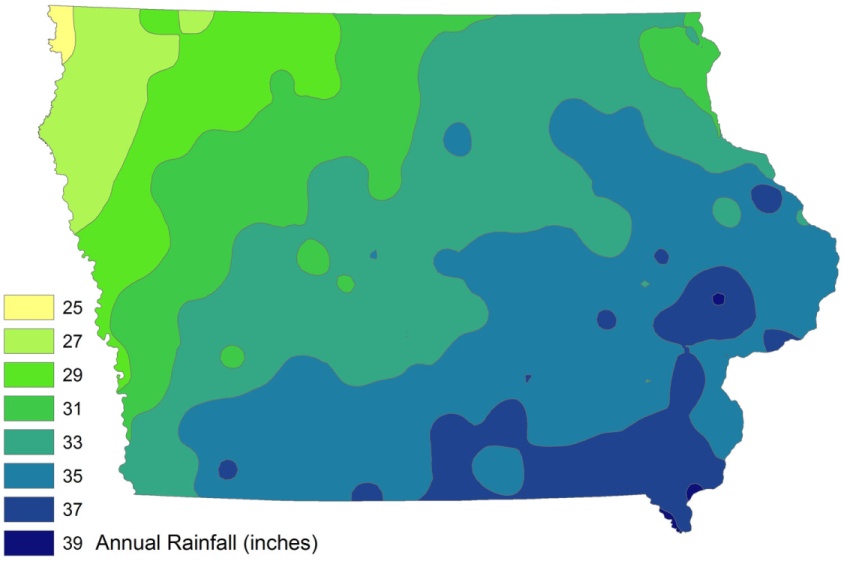 Iowa has a humid continental climate throughout the state (Köppen climate classification ''Dfa'') with extremes of both heat and cold. The average annual temperature at Des Moines is ; for some locations in the north, such as Mason City, the figure is about , while Keokuk, Iowa, Keokuk, on the
Iowa has a humid continental climate throughout the state (Köppen climate classification ''Dfa'') with extremes of both heat and cold. The average annual temperature at Des Moines is ; for some locations in the north, such as Mason City, the figure is about , while Keokuk, Iowa, Keokuk, on the src.noaa.gov. Retrieved February 13, 2008. The 30-year annual average of tornadoes in Iowa is 47. In Late-May 2008 tornado outbreak sequence, 2008, twelve people were killed by tornadoes in Iowa, making it the deadliest year since May 1968 tornado outbreak, 1968 and also the second most tornadoes in a year with 105, matching the total from 2001. Iowa summers are known for heat and humidity, with daytime temperatures sometimes near and occasionally exceeding . Average winters in the state have been known to drop well below freezing, even dropping below . Iowa's all-time hottest temperature of was recorded at Keokuk on July 20, 1934, during a nationwide heat wave; the all-time lowest temperature of was recorded in Washta on January 12, 1912. Iowa has a relatively smooth gradient of varying Precipitation (meteorology), precipitation across the state, with areas in the southeast of the state receiving an average of over of rain annually, and the northwest of the state receiving less than . The pattern of precipitation across Iowa is seasonal, with more rain falling in the summer months. Virtually statewide, the driest month is January or February, and the wettest month is June, owing to frequent showers and thunderstorms, some of which produce hail, damaging winds and/or tornadoes. In Des Moines, roughly in the center of the state, over two-thirds of the of rain falls from April through September, and about half the average annual precipitation falls from May through August, peaking in June.
Settlements
Iowa's population is more urban than rural, with 61 percent living in urban areas in 2000, a trend that began in the early 20th century. Urban counties in Iowa grew 8.5% from 2000 to 2008, while rural counties declined by 4.2%. The shift from rural to urban has caused population increases in more urbanized counties such as Dallas County, Iowa, Dallas, Johnson County, Iowa, Johnson, Linn County, Iowa, Linn, Polk County, Iowa, Polk, and Scott County, Iowa, Scott, at the expense of more rural counties. Iowa, in common with other Midwestern states (especially Kansas, Nebraska, North Dakota, and South Dakota), is feeling the brunt of rural flight, although Iowa has been gaining population since approximately 1990. Some smaller communities, such as Denison, Iowa, Denison and Storm Lake, Iowa, Storm Lake, have mitigated this population loss through gains in immigrant laborers. Another demographic problem for Iowa is the brain drain, in which educated young adults leave the state in search of better prospects in higher education or employment. During the 1990s, Iowa had the second highest exodus rate for single, educated young adults, second only to North Dakota.Demographics
Population
The United States Census Bureau determined the population of Iowa was 3,190,369 on April 1, 2020, a 4.73% increase since the 2010 United States Census, 2010 United States census. Of the residents of Iowa, 70.8% were born in Iowa, 23.6% were born in a different U.S. state, 0.6% were born in Puerto Rico, U.S. Island areas, or born abroad to American parent(s), and 5% were foreign born. Immigration to the United States, Immigration from outside the United States resulted in a net increase of 29,386 people, while migration within the country produced a net loss of 41,140 people. 6.5% of Iowa's population were reported as under the age of five, 22.6% under 18, and 14.7% were 65 or older. Males made up approximately 49.6% of the population. The population density of the state is 52.7 people per square mile. As of the 2010 United States Census, 2010 census, the center of population of Iowa is in Marshall County, Iowa, Marshall County, near Melbourne, Iowa, Melbourne. As of the 2010 census, the population of Iowa was 3,046,355. The gender makeup of the state was 49.5% male and 50.5% female. 23.9% of the population were under the age of 18; 61.2% were between the ages of 18 and 64; and 14.9% were 65 years of age or older. According to the 2016 American Community Survey, 5.6% of Iowa's population were of Hispanic and Latino Americans, Hispanic or Latino origin (of any race): Mexican American, Mexican (4.3%), Puerto Ricans, Puerto Rican (0.2%), Cuban American, Cuban (0.1%), and other Hispanic or Latino origin (1.0%). The five largest ancestry groups were: German American, German (35.1%), Irish American, Irish (13.5%), English American, English (8.2%), American ancestry, American (5.8%), and Norwegian American, Norwegian (5.0%).
According to the 2016 American Community Survey, 5.6% of Iowa's population were of Hispanic and Latino Americans, Hispanic or Latino origin (of any race): Mexican American, Mexican (4.3%), Puerto Ricans, Puerto Rican (0.2%), Cuban American, Cuban (0.1%), and other Hispanic or Latino origin (1.0%). The five largest ancestry groups were: German American, German (35.1%), Irish American, Irish (13.5%), English American, English (8.2%), American ancestry, American (5.8%), and Norwegian American, Norwegian (5.0%).
Birth data
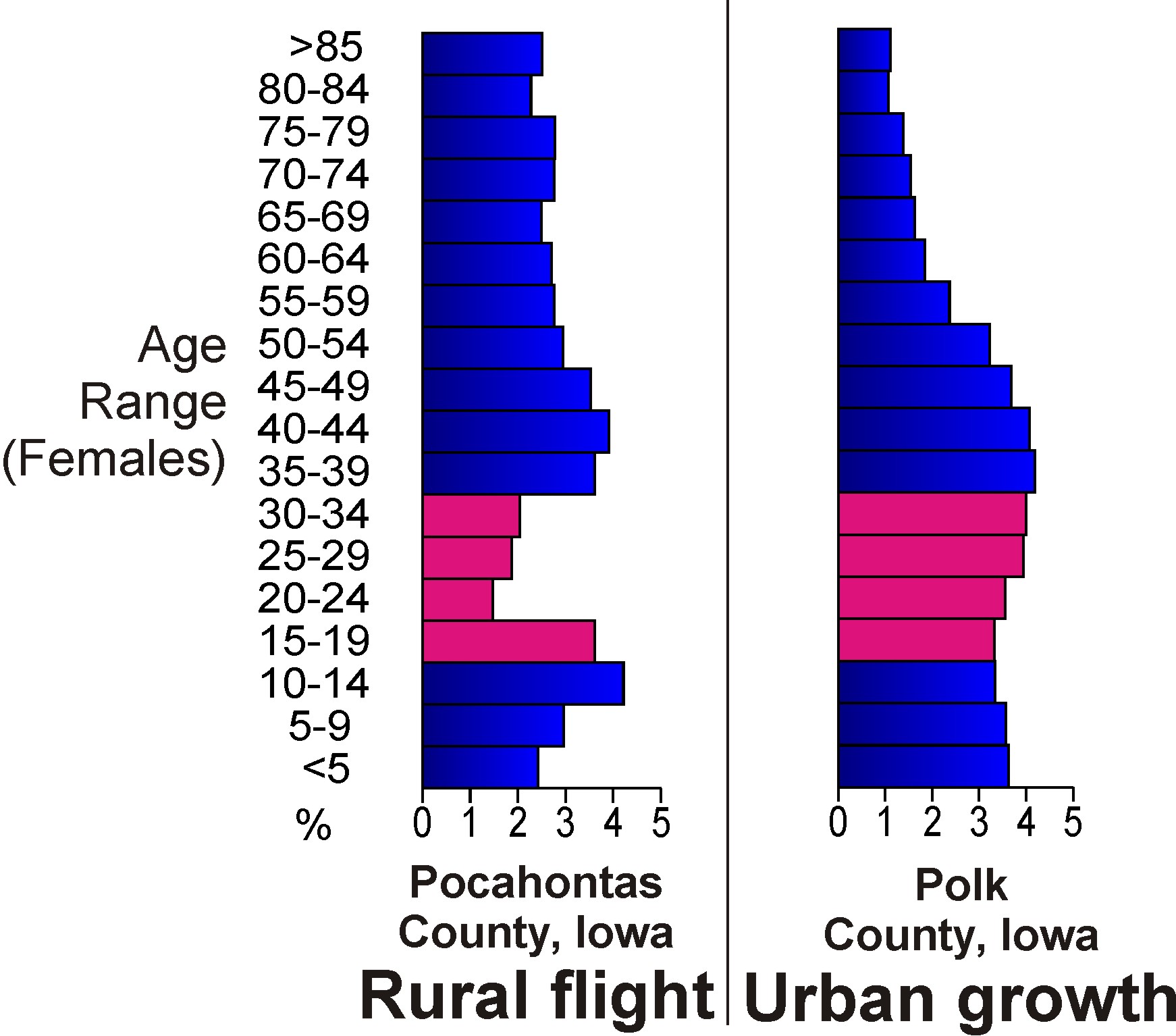 ''Note: Births in table don't add up, because Hispanics are counted both by their ethnicity and by their race, giving a higher overall number.''
* Since 2016, data for births of White Hispanic and Latino Americans, White Hispanic origin are not collected, but included in one ''Hispanic'' group; persons of Hispanic origin may be of any race.
''Note: Births in table don't add up, because Hispanics are counted both by their ethnicity and by their race, giving a higher overall number.''
* Since 2016, data for births of White Hispanic and Latino Americans, White Hispanic origin are not collected, but included in one ''Hispanic'' group; persons of Hispanic origin may be of any race.
Religion
Language
English is the most common language in Iowa, being the sole language spoken by 91.1% of the population. One of the less common languages spoken is sign language and indigenous speaking. The total amount of sign language spoken is about 2.5% of the general population as of 2017. With indigenous speaking, it is about 0.5% of the population. William Labov and colleagues, in the monumental ''Atlas of North American English'' found the English spoken in Iowa divides into multiple linguistic regions. Natives of northern Iowa—including Sioux City, Fort Dodge, and the Waterloo, Iowa, Waterloo region—tend to speak the dialect linguists call North Central American English, which is also found in North Dakota, North and South Dakota, Minnesota,Attractions
Central Iowa
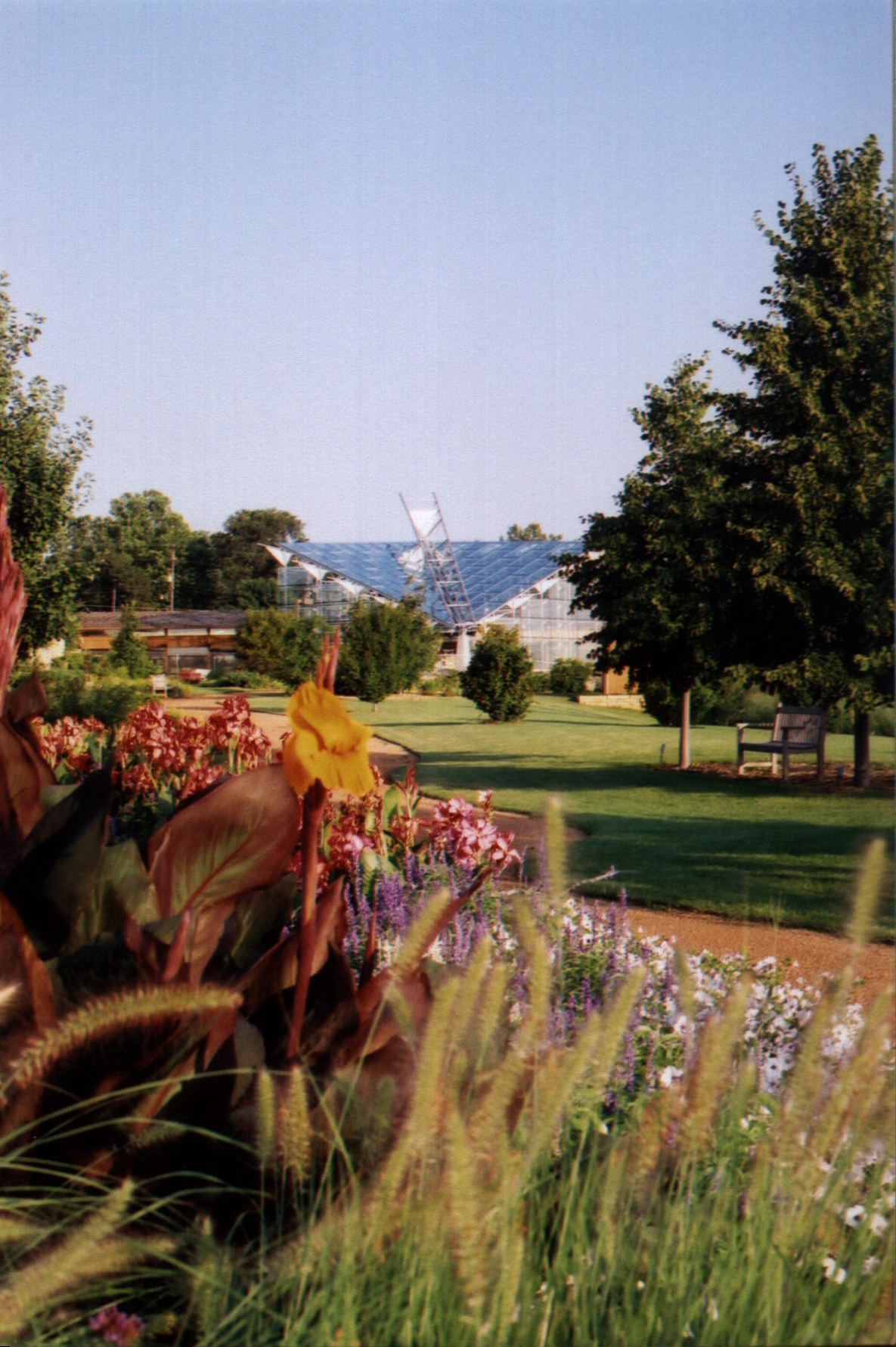 Ames, Iowa, Ames is the home of Iowa State University, the Iowa State Center, and Reiman Gardens.
Des Moines is the largest city and metropolitan area in Iowa and the state's political and economic center. It is home to the Iowa State Capitol, the State Historical Society of Iowa Museum, Drake University, Des Moines Art Center, Greater Des Moines Botanical Garden, Principal Riverwalk, the Iowa State Fair, Terrace Hill, and the World Food Prize. Nearby attractions include Adventureland (Iowa), Adventureland and Prairie Meadows Racetrack Casino in Altoona, Iowa, Altoona, Living History Farms in Urbandale, Iowa, Urbandale, Trainland USA in Colfax, Iowa, Colfax, and the Iowa Speedway and Valle Drive-In in Newton, Iowa, Newton.
Ames, Iowa, Ames is the home of Iowa State University, the Iowa State Center, and Reiman Gardens.
Des Moines is the largest city and metropolitan area in Iowa and the state's political and economic center. It is home to the Iowa State Capitol, the State Historical Society of Iowa Museum, Drake University, Des Moines Art Center, Greater Des Moines Botanical Garden, Principal Riverwalk, the Iowa State Fair, Terrace Hill, and the World Food Prize. Nearby attractions include Adventureland (Iowa), Adventureland and Prairie Meadows Racetrack Casino in Altoona, Iowa, Altoona, Living History Farms in Urbandale, Iowa, Urbandale, Trainland USA in Colfax, Iowa, Colfax, and the Iowa Speedway and Valle Drive-In in Newton, Iowa, Newton.
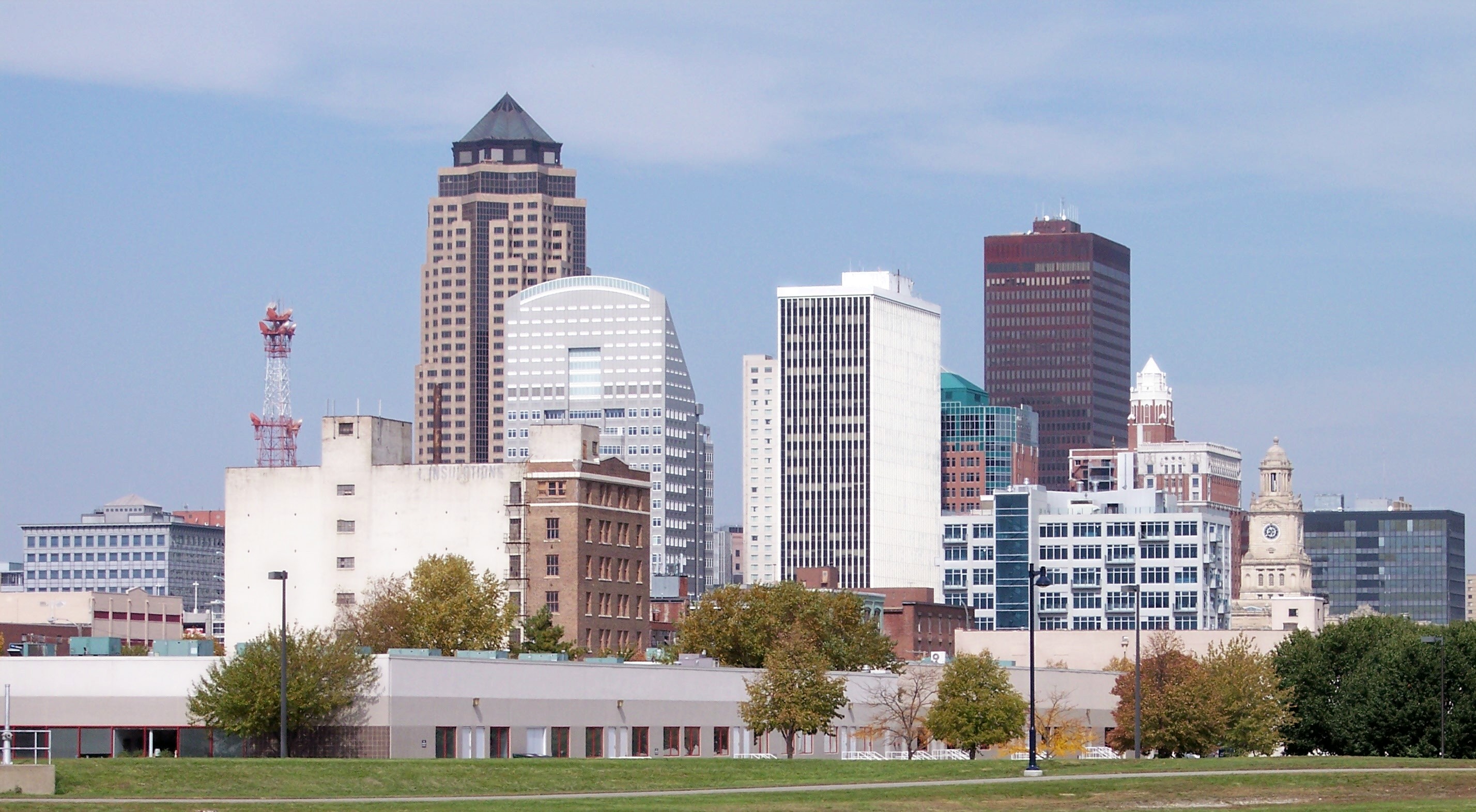 Boone, Iowa, Boone hosts the biennial Farm Progress Show and is home to the Mamie Eisenhower, Mamie Doud Eisenhower museum, the Boone & Scenic Valley Railroad, and Ledges State Park.
The Meskwaki Settlement west of Tama, Iowa, Tama is the only American Indian settlement in Iowa and is host to a large annual Pow-wow.
Madison County, Iowa, Madison County is known for its covered bridges. Also in Madison County is the John Wayne Birthplace Museum is in Winterset, Iowa, Winterset.
Other communities with vibrant historic downtown areas include Newton, Iowa, Newton, Indianola, Iowa, Indianola, Pella, Iowa, Pella, Knoxville, Iowa, Knoxville, Marshalltown, Iowa, Marshalltown, Perry, Iowa, Perry, and Story City, Iowa, Story City.
Boone, Iowa, Boone hosts the biennial Farm Progress Show and is home to the Mamie Eisenhower, Mamie Doud Eisenhower museum, the Boone & Scenic Valley Railroad, and Ledges State Park.
The Meskwaki Settlement west of Tama, Iowa, Tama is the only American Indian settlement in Iowa and is host to a large annual Pow-wow.
Madison County, Iowa, Madison County is known for its covered bridges. Also in Madison County is the John Wayne Birthplace Museum is in Winterset, Iowa, Winterset.
Other communities with vibrant historic downtown areas include Newton, Iowa, Newton, Indianola, Iowa, Indianola, Pella, Iowa, Pella, Knoxville, Iowa, Knoxville, Marshalltown, Iowa, Marshalltown, Perry, Iowa, Perry, and Story City, Iowa, Story City.
Eastern Iowa
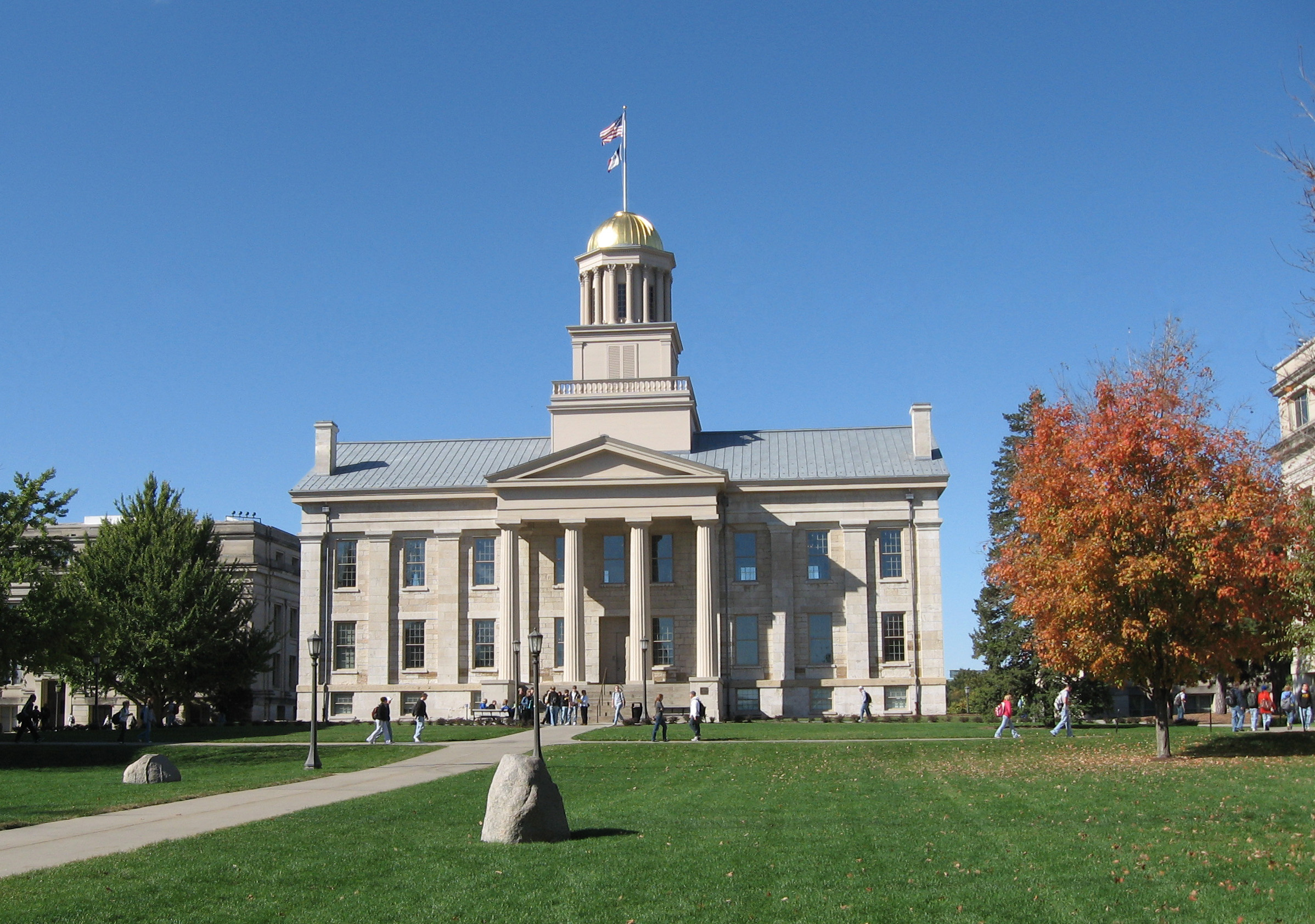
 Iowa City is home to the University of Iowa, which includes the Iowa Writers' Workshop, and the Iowa Old Capitol Building, Old Capitol building. Because of the extraordinary history in the teaching and sponsoring of creative writing that emanated from the Iowa Writers' Workshop and related programs, Iowa City was the first American city designated by the United Nations as a "City of Literature" in the UNESCO Creative Cities Network.
The Herbert Hoover National Historic Site and Herbert Hoover Presidential Library and Museum are in West Branch, Iowa, West Branch.
The Amana Colonies, Iowa, Amana Colonies are a group of settlements of Germans, German Pietists comprising seven villages listed as National Historic Landmarks.
The Cedar Rapids Museum of Art has collections of paintings by Grant Wood and Marvin Cone. Cedar Rapids, Iowa, Cedar Rapids is also home to the National Czech & Slovak Museum & Library and Iowa's only National Trust for Historic Preservation Site, Brucemore mansion.
Iowa City is home to the University of Iowa, which includes the Iowa Writers' Workshop, and the Iowa Old Capitol Building, Old Capitol building. Because of the extraordinary history in the teaching and sponsoring of creative writing that emanated from the Iowa Writers' Workshop and related programs, Iowa City was the first American city designated by the United Nations as a "City of Literature" in the UNESCO Creative Cities Network.
The Herbert Hoover National Historic Site and Herbert Hoover Presidential Library and Museum are in West Branch, Iowa, West Branch.
The Amana Colonies, Iowa, Amana Colonies are a group of settlements of Germans, German Pietists comprising seven villages listed as National Historic Landmarks.
The Cedar Rapids Museum of Art has collections of paintings by Grant Wood and Marvin Cone. Cedar Rapids, Iowa, Cedar Rapids is also home to the National Czech & Slovak Museum & Library and Iowa's only National Trust for Historic Preservation Site, Brucemore mansion.
 Davenport, Iowa, Davenport boasts the Figge Art Museum, River Music Experience, Putnam Museum, Davenport Skybridge, Quad City Symphony Orchestra, Ballet Quad Cities, and plays host to the annual Bix Beiderbecke Memorial Jazz Festival, and the Quad City Air Show, which is the largest airshow in the state.
Other communities with vibrant historic downtown areas include West Liberty, Iowa, West Liberty, Fairfield, Iowa, Fairfield, Burlington, Iowa, Burlington, Mount Pleasant, Iowa, Mount Pleasant, Fort Madison, Iowa, Fort Madison, LeClaire, Iowa, LeClaire, Mount Vernon, Iowa, Mount Vernon, Ottumwa, Iowa, Ottumwa, Washington, Iowa, Washington, and Wilton, Iowa, Wilton.
Along Interstate 80 near Walcott, Iowa, Walcott lies the world's largest truck stop, Iowa 80.
Davenport, Iowa, Davenport boasts the Figge Art Museum, River Music Experience, Putnam Museum, Davenport Skybridge, Quad City Symphony Orchestra, Ballet Quad Cities, and plays host to the annual Bix Beiderbecke Memorial Jazz Festival, and the Quad City Air Show, which is the largest airshow in the state.
Other communities with vibrant historic downtown areas include West Liberty, Iowa, West Liberty, Fairfield, Iowa, Fairfield, Burlington, Iowa, Burlington, Mount Pleasant, Iowa, Mount Pleasant, Fort Madison, Iowa, Fort Madison, LeClaire, Iowa, LeClaire, Mount Vernon, Iowa, Mount Vernon, Ottumwa, Iowa, Ottumwa, Washington, Iowa, Washington, and Wilton, Iowa, Wilton.
Along Interstate 80 near Walcott, Iowa, Walcott lies the world's largest truck stop, Iowa 80.
Western Iowa
Some of the most dramatic scenery in Iowa is found in the unique Loess Hills which are found along Iowa's western border.
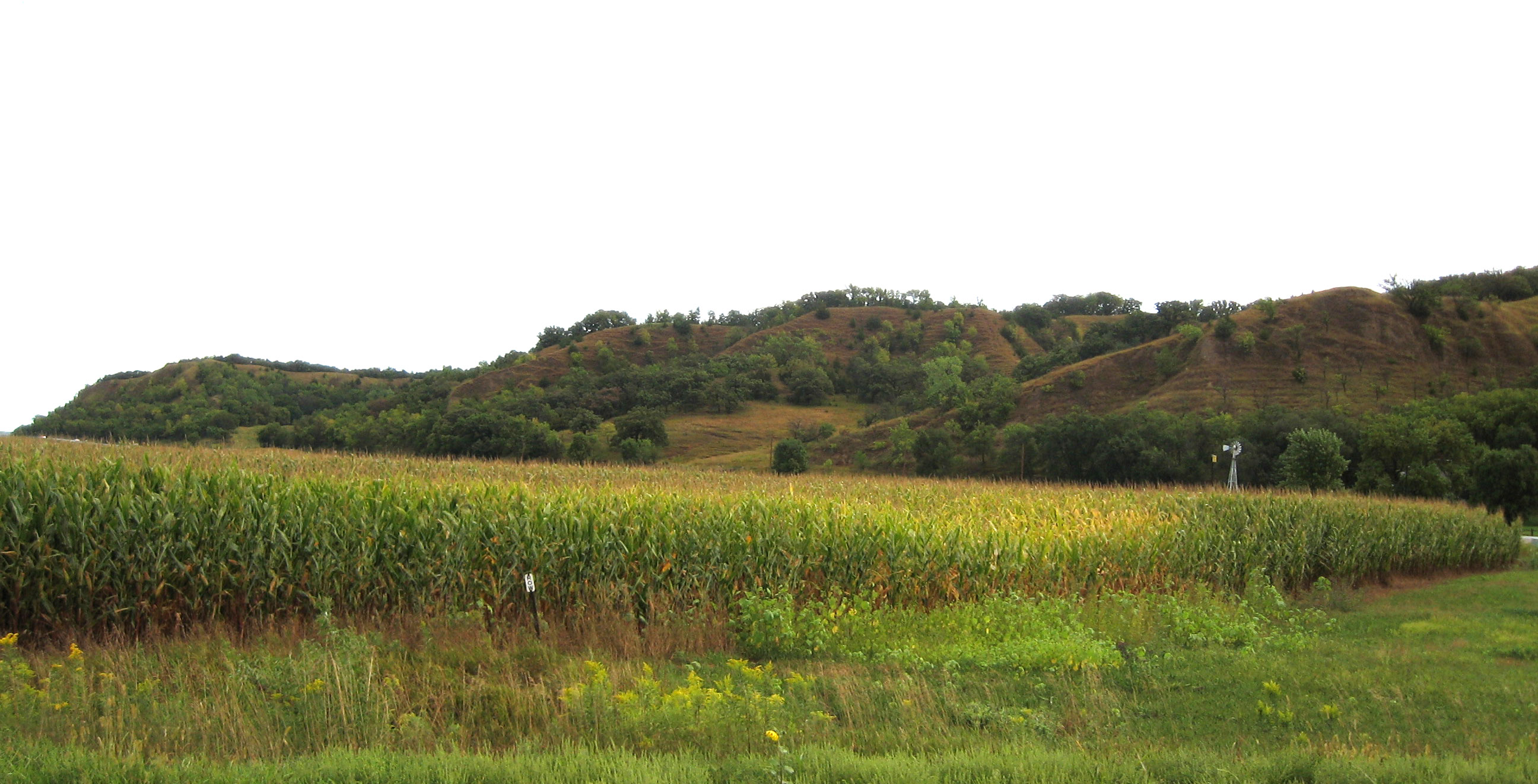 Sioux City, Iowa, Sioux City is the largest city in western Iowa and is found on the convergence of the Missouri River, Missouri, Floyd River, Floyd, and Big Sioux River, Big Sioux Rivers. The Sioux City metropolitan area, Sioux City Metropolitan Area encompasses areas in three states: Iowa, Nebraska, and South Dakota. Sioux City boasts a revitalized downtown and includes attractions such as the Hard Rock Hotel & Casino Sioux City, Hard Rock Hotel and Casino, Sergeant Floyd Monument, Sergeant Floyd River Museum, the Tyson Events Center, Southern Hills Mall, the Orpheum Theater (Sioux City), Orpheum Theater, and more. The historic downtown area is also filled with multiple restaurants, bars, and other entertainment venues. Sioux City is home to two higher education institutions, Morningside College and Briar Cliff University. Le Mars, Iowa, Le Mars is in the northeastern part of the Sioux City metropolitan area, Sioux City Metropolitan Area and is the self-proclaimed "Ice Cream Capital of the World". Le Mars is home to Wells Enterprises, one of the largest ice cream manufacturers in the world. Attractions in Le Mars include the Wells Visitor Center and Ice Cream Parlor, Archie's Wayside (steak house), Bob's Drive Inn, Tonsfeldt Round Barn, Plymouth County Fairgrounds, Plymouth County Museum, and Plymouth County Courthouse (Iowa), Plymouth County Courthouse. Le Mars hosts multiple ice cream-themed community events each year.
Council Bluffs, Iowa, Council Bluffs, part of the Omaha Metro, Omaha (Nebr.) Metropolitan Area and a hub of southwest Iowa sits at the base of the Loess Hills National Scenic Byway. With three casino resorts, the city also includes such cultural attractions as the Western Hills Trails Center, Union Pacific Railroad Museum, the Grenville M. Dodge House, Ruth Anne Dodge Memorial, The Black Angel, and the Lewis and Clark Monument, with clear views of the Downtown Omaha skyline found throughout the city.
Sioux City, Iowa, Sioux City is the largest city in western Iowa and is found on the convergence of the Missouri River, Missouri, Floyd River, Floyd, and Big Sioux River, Big Sioux Rivers. The Sioux City metropolitan area, Sioux City Metropolitan Area encompasses areas in three states: Iowa, Nebraska, and South Dakota. Sioux City boasts a revitalized downtown and includes attractions such as the Hard Rock Hotel & Casino Sioux City, Hard Rock Hotel and Casino, Sergeant Floyd Monument, Sergeant Floyd River Museum, the Tyson Events Center, Southern Hills Mall, the Orpheum Theater (Sioux City), Orpheum Theater, and more. The historic downtown area is also filled with multiple restaurants, bars, and other entertainment venues. Sioux City is home to two higher education institutions, Morningside College and Briar Cliff University. Le Mars, Iowa, Le Mars is in the northeastern part of the Sioux City metropolitan area, Sioux City Metropolitan Area and is the self-proclaimed "Ice Cream Capital of the World". Le Mars is home to Wells Enterprises, one of the largest ice cream manufacturers in the world. Attractions in Le Mars include the Wells Visitor Center and Ice Cream Parlor, Archie's Wayside (steak house), Bob's Drive Inn, Tonsfeldt Round Barn, Plymouth County Fairgrounds, Plymouth County Museum, and Plymouth County Courthouse (Iowa), Plymouth County Courthouse. Le Mars hosts multiple ice cream-themed community events each year.
Council Bluffs, Iowa, Council Bluffs, part of the Omaha Metro, Omaha (Nebr.) Metropolitan Area and a hub of southwest Iowa sits at the base of the Loess Hills National Scenic Byway. With three casino resorts, the city also includes such cultural attractions as the Western Hills Trails Center, Union Pacific Railroad Museum, the Grenville M. Dodge House, Ruth Anne Dodge Memorial, The Black Angel, and the Lewis and Clark Monument, with clear views of the Downtown Omaha skyline found throughout the city.
 The Iowa Great Lakes is made up of multiple small towns, such as Spirit Lake, Iowa, Spirit Lake, Arnolds Park, Iowa, Arnolds Park, Milford, Iowa, Milford, and Okoboji. Multiple resorts and other tourist attractions are found in and around these towns surrounding the popular lakes. Arnolds Park, one of the oldest amusement parks in the country, is located on Lake Okoboji in Arnolds Park, Iowa, Arnolds Park.
The Sanford Museum and Planetarium in Cherokee, Iowa, Cherokee, Grotto of the Redemption in West Bend, Iowa, West Bend, The Danish Immigrant Museum in Elk Horn, Iowa, Elk Horn, and the Fort Museum and Frontier Village in Fort Dodge, Iowa, Fort Dodge are other regional destinations.
Every year in early May, the city of Orange City, Iowa, Orange City holds the annual Tulip Festival, a celebration of the strong Dutch heritage in the region.
Northwest Iowa is home to some of the largest concentrations of wind turbine farms in the world. Other western communities with vibrant historic downtown areas include Storm Lake, Iowa, Storm Lake, Spencer, Iowa, Spencer, Glenwood, Iowa, Glenwood, Carroll, Iowa, Carroll, Harlan, Iowa, Harlan, Atlantic, Iowa, Atlantic, Red Oak, Iowa, Red Oak, Denison, Iowa, Denison, Creston, Iowa, Creston, Mount Ayr, Iowa, Mount Ayr, Sac City, Iowa, Sac City, and Walnut, Iowa, Walnut.
The Iowa Great Lakes is made up of multiple small towns, such as Spirit Lake, Iowa, Spirit Lake, Arnolds Park, Iowa, Arnolds Park, Milford, Iowa, Milford, and Okoboji. Multiple resorts and other tourist attractions are found in and around these towns surrounding the popular lakes. Arnolds Park, one of the oldest amusement parks in the country, is located on Lake Okoboji in Arnolds Park, Iowa, Arnolds Park.
The Sanford Museum and Planetarium in Cherokee, Iowa, Cherokee, Grotto of the Redemption in West Bend, Iowa, West Bend, The Danish Immigrant Museum in Elk Horn, Iowa, Elk Horn, and the Fort Museum and Frontier Village in Fort Dodge, Iowa, Fort Dodge are other regional destinations.
Every year in early May, the city of Orange City, Iowa, Orange City holds the annual Tulip Festival, a celebration of the strong Dutch heritage in the region.
Northwest Iowa is home to some of the largest concentrations of wind turbine farms in the world. Other western communities with vibrant historic downtown areas include Storm Lake, Iowa, Storm Lake, Spencer, Iowa, Spencer, Glenwood, Iowa, Glenwood, Carroll, Iowa, Carroll, Harlan, Iowa, Harlan, Atlantic, Iowa, Atlantic, Red Oak, Iowa, Red Oak, Denison, Iowa, Denison, Creston, Iowa, Creston, Mount Ayr, Iowa, Mount Ayr, Sac City, Iowa, Sac City, and Walnut, Iowa, Walnut.
Northeast and Northern Iowa

 The Driftless Area of northeast Iowa has many steep hills and deep valleys, checkered with forest and terraced fields. Effigy Mounds National Monument in Allamakee County, Iowa, Allamakee and Clayton County, Iowa, Clayton Counties has the largest assemblage of animal-shaped prehistoric mounds in the world.
Waterloo, Iowa, Waterloo is home of the Grout Museum and Lost Island Theme Park and is headquarters of the Silos & Smokestacks National Heritage Area. Cedar Falls, Iowa, Cedar Falls is home of the University of Northern Iowa.
Dubuque, Iowa, Dubuque is a regional tourist destination with attractions such as the National Mississippi River Museum and Aquarium and the Port of Dubuque.
Dyersville, Iowa, Dyersville is home to the famed ''Field of Dreams (Dubuque County, Iowa), Field of Dreams'' baseball diamond. Maquoketa Caves State Park, near Maquoketa, Iowa, Maquoketa, contains more caves than any other state park.
Fort Atkinson State Preserve in Fort Atkinson, Iowa, Fort Atkinson has the remains of an original 1840s Dragoon fortification.
Fort Dodge is home of The Fort historical museum and the Blanden Art Museum, and host Frontiers Days which celebrate the town history.
Other communities with vibrant historic downtown areas include Decorah, Iowa, Decorah, McGregor, Iowa, McGregor, Mason City, Iowa, Mason City, Elkader, Iowa, Elkader, Bellevue, Iowa, Bellevue, Guttenberg, Iowa, Guttenberg, Algona, Iowa, Algona, Spillville, Iowa, Spillville, Charles City, Iowa, Charles City, and Independence, Iowa, Independence.
The Driftless Area of northeast Iowa has many steep hills and deep valleys, checkered with forest and terraced fields. Effigy Mounds National Monument in Allamakee County, Iowa, Allamakee and Clayton County, Iowa, Clayton Counties has the largest assemblage of animal-shaped prehistoric mounds in the world.
Waterloo, Iowa, Waterloo is home of the Grout Museum and Lost Island Theme Park and is headquarters of the Silos & Smokestacks National Heritage Area. Cedar Falls, Iowa, Cedar Falls is home of the University of Northern Iowa.
Dubuque, Iowa, Dubuque is a regional tourist destination with attractions such as the National Mississippi River Museum and Aquarium and the Port of Dubuque.
Dyersville, Iowa, Dyersville is home to the famed ''Field of Dreams (Dubuque County, Iowa), Field of Dreams'' baseball diamond. Maquoketa Caves State Park, near Maquoketa, Iowa, Maquoketa, contains more caves than any other state park.
Fort Atkinson State Preserve in Fort Atkinson, Iowa, Fort Atkinson has the remains of an original 1840s Dragoon fortification.
Fort Dodge is home of The Fort historical museum and the Blanden Art Museum, and host Frontiers Days which celebrate the town history.
Other communities with vibrant historic downtown areas include Decorah, Iowa, Decorah, McGregor, Iowa, McGregor, Mason City, Iowa, Mason City, Elkader, Iowa, Elkader, Bellevue, Iowa, Bellevue, Guttenberg, Iowa, Guttenberg, Algona, Iowa, Algona, Spillville, Iowa, Spillville, Charles City, Iowa, Charles City, and Independence, Iowa, Independence.
Statewide
Iowa Historic Bike Ride RAGBRAI, the Register's Annual Great Bicycle Ride Across Iowa, attracts thousands of bicyclists and support personnel. It has crossed the state on various routes each year since 1973. Iowa is home to more than 70 wineries, and hosts five regional wine tasting trails. Many Iowa communities hold farmers' markets during warmer months; these are typically weekly events, but larger cities can host multiple markets.Economy
 * In 2016, the total employment of the state's population was 1,354,487, and the total number of employer establishments was 81,563.
CNBC's list of "Top States for Business in 2010" has recognized Iowa as the sixth best state in the nation. Scored in 10 individual categories, Iowa was ranked first when it came to the "Cost of Doing Business"; this includes all taxes, utility costs, and other costs associated with doing business. Iowa was also ranked 10th in "Economy", 12th in "Business Friendliness", 16th in "Education", 17th in both "Cost of Living" and "Quality of Life", 20th in "Workforce", 29th in "Technology and Innovation", 32nd in "Transportation" and the lowest ranking was 36th in "Access to Capital".
While Iowa is often viewed as a farming state, agriculture is a relatively small portion of the state's diversified economy, with manufacturing, biotechnology, finance and insurance services, and government services contributing substantially to Iowa's economy. This economic diversity has helped Iowa weather the Late-2000s recession, late 2000s recession better than most states, with unemployment substantially lower than the rest of the nation.
If the economy is measured by gross domestic product, in 2005 Iowa's GDP was about $124 billion. If measured by gross state product, for 2005 it was $113.5 billion. Its per capita income for 2006 was $23,340.
On July 2, 2009, Standard & Poor's rated the state of Iowa's credit as AAA (the highest of its credit ratings, held by only 11 U.S. state governments).
As of September 2021, the state's unemployment rate is 4.0%.
* In 2016, the total employment of the state's population was 1,354,487, and the total number of employer establishments was 81,563.
CNBC's list of "Top States for Business in 2010" has recognized Iowa as the sixth best state in the nation. Scored in 10 individual categories, Iowa was ranked first when it came to the "Cost of Doing Business"; this includes all taxes, utility costs, and other costs associated with doing business. Iowa was also ranked 10th in "Economy", 12th in "Business Friendliness", 16th in "Education", 17th in both "Cost of Living" and "Quality of Life", 20th in "Workforce", 29th in "Technology and Innovation", 32nd in "Transportation" and the lowest ranking was 36th in "Access to Capital".
While Iowa is often viewed as a farming state, agriculture is a relatively small portion of the state's diversified economy, with manufacturing, biotechnology, finance and insurance services, and government services contributing substantially to Iowa's economy. This economic diversity has helped Iowa weather the Late-2000s recession, late 2000s recession better than most states, with unemployment substantially lower than the rest of the nation.
If the economy is measured by gross domestic product, in 2005 Iowa's GDP was about $124 billion. If measured by gross state product, for 2005 it was $113.5 billion. Its per capita income for 2006 was $23,340.
On July 2, 2009, Standard & Poor's rated the state of Iowa's credit as AAA (the highest of its credit ratings, held by only 11 U.S. state governments).
As of September 2021, the state's unemployment rate is 4.0%.
Manufacturing
Manufacturing is the largest sector of Iowa's economy, with $20.8 billion (21%) of Iowa's 2003 gross state product. Major manufacturing sectors include food processing, heavy machinery, and agricultural chemicals. Sixteen percent of Iowa's workforce is dedicated to manufacturing. Food processing is the largest component of manufacturing. Besides processed food, industrial outputs include machinery, electric equipment, chemical products, publishing, and primary metals. Companies with direct or indirect processing facilities in Iowa include ConAgra Foods, Wells Dairy, Wells Blue Bunny, Barilla Group, Barilla, H. J. Heinz Company, Heinz, Tone's Spices, General Mills, and Quaker Oats. Meatpacker Tyson Foods has 11 locations, second only to its headquarter state Arkansas. Major non-food manufacturing firms with production facilities in Iowa include 3M, Arconic, Amana Corporation, Emerson Process Management, Emerson Electric, The HON Company, SSAB, John Deere, Lennox International, Lennox Manufacturing, Pella (company), Pella Corporation, Procter & Gamble, Vermeer Company, and Winnebago Industries.Agriculture


 Though industrial-scale, commodity agriculture predominates in much of the state, Iowa has seen growth in the organic farming sector. Iowa ranks fifth in the nation in total number of organic farms. In 2016, there were approximately 732 organic farms in the state, an increase of about 5% from the previous year, and 103,136 organic acres, an increase of 9,429 from the previous year. Iowa has also seen an increase in demand for local, sustainably-grown food. Northeast Iowa, part of the Driftless Area, has led the state in development of its regional food system and grows and consumes more local food than any other region in Iowa.
Iowa's Driftless Region is also home to the nationally recognized Seed Savers Exchange, a non-profit seed bank housed at an 890-acre heritage farm near Decorah, Iowa, Decorah, in the northeast corner of the state. The largest nongovernmental seed bank of its kind in the United States, Seed Savers Exchange safeguards more than 20,000 varieties of rare, heirloom seeds.
Though industrial-scale, commodity agriculture predominates in much of the state, Iowa has seen growth in the organic farming sector. Iowa ranks fifth in the nation in total number of organic farms. In 2016, there were approximately 732 organic farms in the state, an increase of about 5% from the previous year, and 103,136 organic acres, an increase of 9,429 from the previous year. Iowa has also seen an increase in demand for local, sustainably-grown food. Northeast Iowa, part of the Driftless Area, has led the state in development of its regional food system and grows and consumes more local food than any other region in Iowa.
Iowa's Driftless Region is also home to the nationally recognized Seed Savers Exchange, a non-profit seed bank housed at an 890-acre heritage farm near Decorah, Iowa, Decorah, in the northeast corner of the state. The largest nongovernmental seed bank of its kind in the United States, Seed Savers Exchange safeguards more than 20,000 varieties of rare, heirloom seeds.
 As of 2007, the direct production and sale of conventional agricultural commodities contributed only about 3.5% of Iowa's gross state product. In 2002 the impact of the indirect role of agriculture in Iowa's economy, including agriculture-affiliated business, was calculated at 16.4% in terms of value added and 24.3% in terms of total output. This was lower than the economic impact of non-farm manufacturing, which accounted for 22.4% of total value added and 26.5% of total output. Iowa's main conventional agricultural commodities are pig, hogs, maize, corn, soybeans, oats, cattle, eggs, and dairy products. Iowa is the nation's largest producer of ethanol and maize, corn and some years is the largest grower of soybeans. In 2008, the 92,600 farms in Iowa produced 19% of the nation's corn, 17% of the soybeans, 30% of the hogs, and 14% of the eggs.
major Iowa agricultural product processors include Archer Daniels Midland, Cargill, Inc., Diamond V Mills, and Quaker Oats.
As of 2007, the direct production and sale of conventional agricultural commodities contributed only about 3.5% of Iowa's gross state product. In 2002 the impact of the indirect role of agriculture in Iowa's economy, including agriculture-affiliated business, was calculated at 16.4% in terms of value added and 24.3% in terms of total output. This was lower than the economic impact of non-farm manufacturing, which accounted for 22.4% of total value added and 26.5% of total output. Iowa's main conventional agricultural commodities are pig, hogs, maize, corn, soybeans, oats, cattle, eggs, and dairy products. Iowa is the nation's largest producer of ethanol and maize, corn and some years is the largest grower of soybeans. In 2008, the 92,600 farms in Iowa produced 19% of the nation's corn, 17% of the soybeans, 30% of the hogs, and 14% of the eggs.
major Iowa agricultural product processors include Archer Daniels Midland, Cargill, Inc., Diamond V Mills, and Quaker Oats.
Health insurance
As of 2014, there were 16 organizations offering health insurance products in Iowa, per the State of Iowa Insurance Division. Iowa was fourth out of ten states with the biggest drop in competition levels of health insurance between 2010 and 2011, per the 2013 annual report on the level of competition in the health insurance industry by the American Medical Association using 2011 data from HealthLeaders-Interstudy, the most comprehensive source of data on enrollment in health maintenance organization (HMO), preferred provider organization (PPO), point-of-service (POS) and consumer-driven health care plans. According to the AMA annual report from 2007 Wellmark Blue Cross Blue Shield had provided 71% of the state's health insurance. The Iowa Insurance Division "Annual report to the Iowa Governor and the Iowa Legislature" from November 2014 looked at the 95% of health insurers by premium, which are 10 companies. It found Wellmark Inc. to dominate the three health insurance markets it examined (individual, small group and large group) at 52–67%. Wellmark HealthPlan of Iowa and Wellmark Inc had the highest risk-based capital percentages of all 10 providers at 1158% and 1132%, respectively. Rising RBC is an indication of profits.Other sectors

 Iowa has a strong financial and insurance sector, with approximately 6,100 firms, including Aegon N.V., AEGON, Nationwide Mutual Insurance Company, Nationwide Group, Aviva, Aviva USA, Nationwide Mutual Insurance Company, Farm Bureau Financial Services, Voya Financial, Marsh & McLennan Companies, Marsh Affinity Group, MetLife, Principal Financial Group, Principal Capital Management, Wells Fargo, and University of Iowa Community Credit Union.
Iowa is host to at least two business incubators, Iowa State University Research Park and the BioVentures Center at the University of Iowa. The Research Park hosts about 50 companies, among them NewLink Genetics, which develops Cancer immunotherapy, cancer immunotherapeutics, and the U.S. animal health division of Boehringer Ingelheim, Vetmedica.
Ethanol fuel, Ethanol production consumes about a third of Iowa's corn production, and renewable fuels account for eight percent of the state's gross domestic product. A total of 39 ethanol plants produced of fuel in 2009.
Renewable energy has become a major economic force in northern and western Iowa, with wind turbine electrical generation increasing exponentially since 1990. In 2019, wind power in Iowa accounted for 42% of electrical energy produced, and 10,201 megawatts of generating capacity had been installed at the end of the year. Iowa ranked first of U.S. states in percentage of total power generated by wind and second in wind generating capacity behind Texas. Major producers of turbines and components in Iowa include Acciona Energy of West Branch, Iowa, West Branch, TPI Composites of Newton, Iowa, Newton, and Siemens Energy of Fort Madison.
In 2016, Iowa was the headquarters for three of the top 2,000 companies for revenue. They include Principal Financial, Rockwell Collins, and American Equity Investment. Iowa is also headquarters to other companies including Hy-Vee, Pella (company), Pella Corporation, Vermeer Company, Kum & Go gas stations, Von Maur, Pioneer Hi-Bred, and Fareway.
Iowa has a strong financial and insurance sector, with approximately 6,100 firms, including Aegon N.V., AEGON, Nationwide Mutual Insurance Company, Nationwide Group, Aviva, Aviva USA, Nationwide Mutual Insurance Company, Farm Bureau Financial Services, Voya Financial, Marsh & McLennan Companies, Marsh Affinity Group, MetLife, Principal Financial Group, Principal Capital Management, Wells Fargo, and University of Iowa Community Credit Union.
Iowa is host to at least two business incubators, Iowa State University Research Park and the BioVentures Center at the University of Iowa. The Research Park hosts about 50 companies, among them NewLink Genetics, which develops Cancer immunotherapy, cancer immunotherapeutics, and the U.S. animal health division of Boehringer Ingelheim, Vetmedica.
Ethanol fuel, Ethanol production consumes about a third of Iowa's corn production, and renewable fuels account for eight percent of the state's gross domestic product. A total of 39 ethanol plants produced of fuel in 2009.
Renewable energy has become a major economic force in northern and western Iowa, with wind turbine electrical generation increasing exponentially since 1990. In 2019, wind power in Iowa accounted for 42% of electrical energy produced, and 10,201 megawatts of generating capacity had been installed at the end of the year. Iowa ranked first of U.S. states in percentage of total power generated by wind and second in wind generating capacity behind Texas. Major producers of turbines and components in Iowa include Acciona Energy of West Branch, Iowa, West Branch, TPI Composites of Newton, Iowa, Newton, and Siemens Energy of Fort Madison.
In 2016, Iowa was the headquarters for three of the top 2,000 companies for revenue. They include Principal Financial, Rockwell Collins, and American Equity Investment. Iowa is also headquarters to other companies including Hy-Vee, Pella (company), Pella Corporation, Vermeer Company, Kum & Go gas stations, Von Maur, Pioneer Hi-Bred, and Fareway.
Taxation
Tax is collected by the Iowa Department of Revenue. Iowa imposes taxes on net state income of individuals, estates, and trusts. There are nine income tax brackets, ranging from 0.36% to 8.98%, as well as four corporate income tax brackets ranging from 6%to 12%, giving Iowa the country's highest marginal corporate tax rate. The state sales tax rate is 6%, with non-prepared food having no tax. Iowa has one local option sales tax that may be imposed by counties after an election. Property tax is levied on the taxable value of real property. Iowa has more than 2,000 taxing authorities. Most property is taxed by more than one taxing authority. The tax rate differs in each locality and is a composite of county, city or rural township, school district and special levies. Iowa allows its residents to deduct their federal income taxes from their state income taxes.Education
Primary and secondary schools
Iowa was one of the leading states in the high school movement, and continues to be among the top educational performers today. The four-year graduation rate for high schoolers was 91.3% in 2017. Iowa's schools are credited with the highest graduation rate in the nation as of 2019. Iowa has 333 school districts, 1,329 school buildings and has the 14th lowest student-to-teacher ratio of 14.2. Teacher pay is ranked 22nd, with the average salary being $55,647. transportation spending is a significant part of the budgets of rural school districts as many are geographically large and must transport students across vast distances. This reduces the amount of money spent on other aspects of the districts. The state's oldest functioning school building is located in Bellevue, Iowa, Bellevue in the historic Jackson County Courthouse (Bellevue, Iowa), Jackson County Courthouse which has been in continuous use as a school since 1848.Colleges and universities
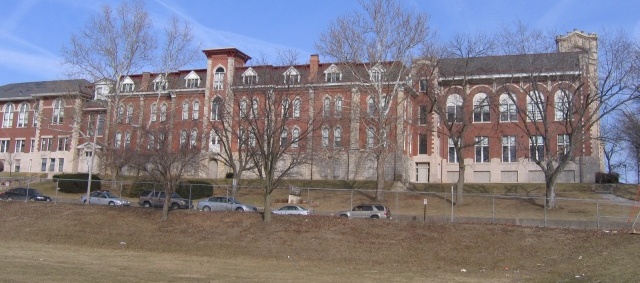 The Board of Regents, State of Iowa, Iowa Board of Regents is composed of nine citizen volunteers appointed by the governor to provide policymaking, coordination, and oversight of the state's three public universities, two special K–12 schools, and affiliated centers.
The special K–12 schools include the Iowa School for the Deaf in Council Bluffs, Iowa, Council Bluffs and the Iowa Braille and Sight Saving School in Vinton, Iowa, Vinton. Both Iowa State University and The University of Iowa are research universities with The University of Iowa also being a member of the prestigious Association of American Universities. In addition to the three state universities, Iowa has multiple private colleges and universities.
The Board of Regents, State of Iowa, Iowa Board of Regents is composed of nine citizen volunteers appointed by the governor to provide policymaking, coordination, and oversight of the state's three public universities, two special K–12 schools, and affiliated centers.
The special K–12 schools include the Iowa School for the Deaf in Council Bluffs, Iowa, Council Bluffs and the Iowa Braille and Sight Saving School in Vinton, Iowa, Vinton. Both Iowa State University and The University of Iowa are research universities with The University of Iowa also being a member of the prestigious Association of American Universities. In addition to the three state universities, Iowa has multiple private colleges and universities.
Transportation

Interstate highways
Iowa has four primary interstate highways. Interstate 29 in Iowa, Interstate 29 (I-29) travels along the state's western edge through Council Bluffs, Iowa, Council Bluffs and Sioux City, Iowa, Sioux City. Interstate 35 in Iowa, I-35 travels from the Missouri state line to the Minnesota state line through the state's center, including Des Moines. Interstate 74 in Iowa, I-74 begins at Interstate 80 in Iowa, I-80 just northeast of Davenport, Iowa, Davenport. I-80 travels from the Nebraska state line to the Illinois state line through the center of the state, including Council Bluffs, Des Moines, Iowa City, Iowa, Iowa City, and the Quad Cities. Interstate 380 (Iowa), I-380 is an List of auxiliary Interstate Highways, auxiliary Interstate Highway, which travels from I-80 near Iowa City through Cedar Rapids, Iowa, Cedar Rapids ending in Waterloo, Iowa, Waterloo and is part of the Avenue of the Saints highway. Iowa is among the few jurisdictions where municipalities install speed cameras on interstate highways providing a substantial revenue source from out of state drivers.Airports with scheduled flights
Iowa is served by several regional airports including the Des Moines International Airport, the Eastern Iowa Airport, in Cedar Rapids, Quad City International Airport, in Moline, Illinois, and Eppley Airfield, in Omaha, Nebraska. Smaller airports in the state include the Davenport Municipal Airport (Iowa), Dubuque Regional Airport, Fort Dodge Regional Airport, Mason City Municipal Airport, Sioux Gateway Airport, Southeast Iowa Regional Airport, and Waterloo Regional Airport.Railroads
Amtrak's ''California Zephyr'' serves southern Iowa with stops in Burlington, Iowa, Burlington, Mount Pleasant, Iowa, Mount Pleasant, Ottumwa, Iowa, Ottumwa, Osceola, Iowa, Osceola, and Creston, Iowa, Creston along its route between Chicago and Emeryville, California. Fort Madison, Iowa, Fort Madison is served by Amtrak's ''Southwest Chief'', running between Chicago and Los Angeles. Both trains currently run tri-weekly and are expected to return to daily service in June.Public Transit
Iowa is served by a number of local transit providers including Bettendorf Transit, Cambus, Cedar Rapids Transit, Coralville Transit, Cyride, Davenport Citibus, Des Moines Area Regional Transit, Iowa City Transit, The Jule, Metropolitan Transit Authority of Black Hawk County, MET Transit, Metro Transit (Omaha), Omaha Metro Transit, Ottumwa Transit Authority, Quad Cities MetroLINK and Sioux City Transit. Intercity bus service in the state is provided by Burlington Trailways and Jefferson Lines.Law and government
State
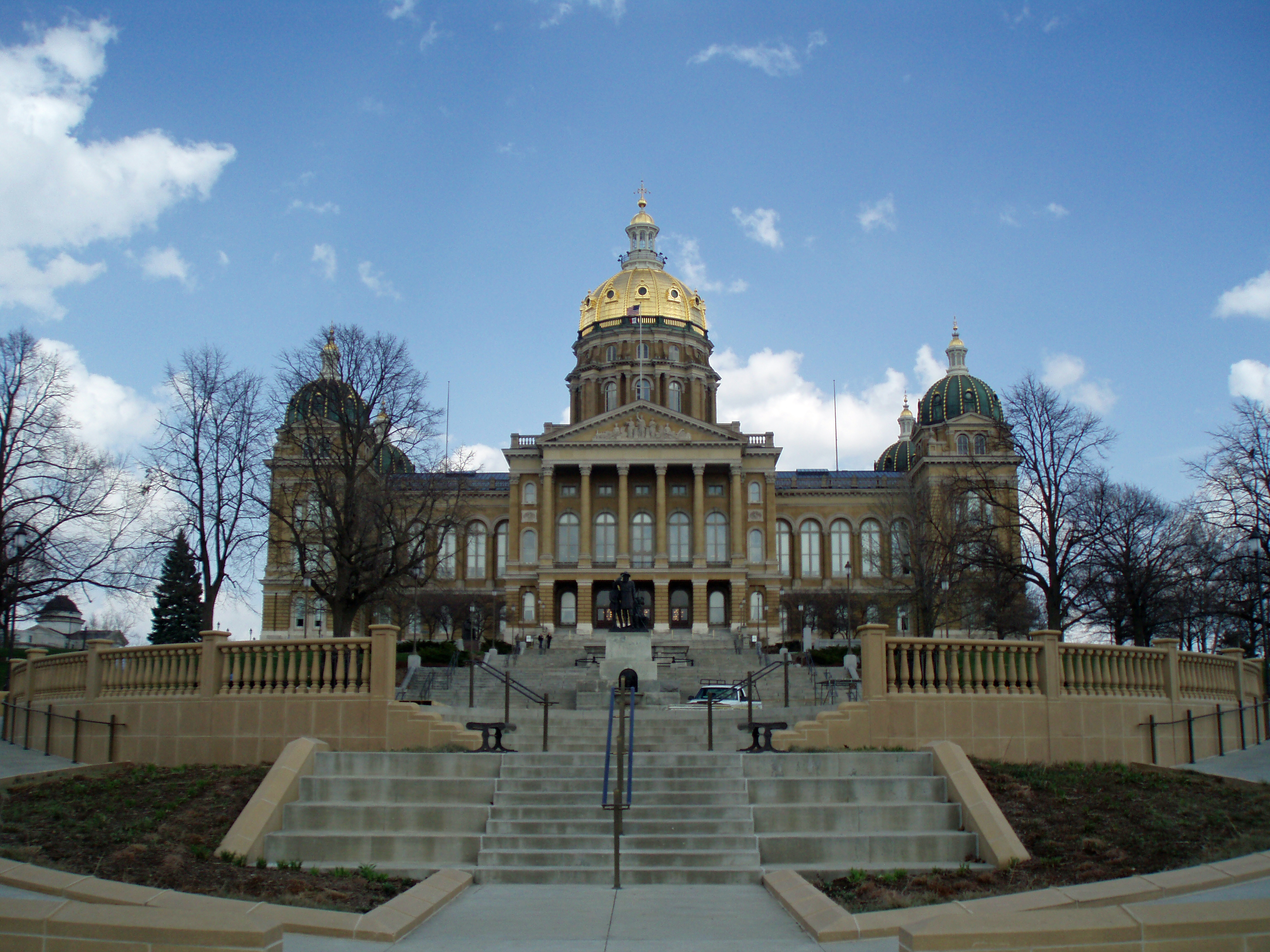 , the 43rd and current Governor of Iowa is Kim Reynolds (R). Other statewide elected officials are:
* Adam Gregg (R), List of lieutenant governors of Iowa, Lieutenant Governor
* Paul Pate (R), Secretary of State of Iowa, Secretary of State
* Rob Sand (D), Auditor of State of Iowa, Auditor of State
* Michael Fitzgerald (Iowa politician), Michael Fitzgerald (D), Treasurer of State of Iowa, Treasurer of State
* Mike Naig (R), Secretary of Agriculture of Iowa, Secretary of Agriculture
* Tom Miller (politician), Tom Miller (D), Attorney General of Iowa, Attorney General
The Code of Iowa contains Iowa's statutory laws. It is periodically updated by the Iowa Legislative Service Bureau, with a new edition published in odd-numbered years and a supplement published in even-numbered years.
Iowa is an alcohol monopoly or alcoholic beverage control state.
, the 43rd and current Governor of Iowa is Kim Reynolds (R). Other statewide elected officials are:
* Adam Gregg (R), List of lieutenant governors of Iowa, Lieutenant Governor
* Paul Pate (R), Secretary of State of Iowa, Secretary of State
* Rob Sand (D), Auditor of State of Iowa, Auditor of State
* Michael Fitzgerald (Iowa politician), Michael Fitzgerald (D), Treasurer of State of Iowa, Treasurer of State
* Mike Naig (R), Secretary of Agriculture of Iowa, Secretary of Agriculture
* Tom Miller (politician), Tom Miller (D), Attorney General of Iowa, Attorney General
The Code of Iowa contains Iowa's statutory laws. It is periodically updated by the Iowa Legislative Service Bureau, with a new edition published in odd-numbered years and a supplement published in even-numbered years.
Iowa is an alcohol monopoly or alcoholic beverage control state.
National
The two U.S. Senators: * Chuck Grassley (R), in office since 1981 * Joni Ernst (R), in office since 2015 The four U.S. Representatives: * Ashley Hinson (R), Iowa's 1st congressional district, First district * Mariannette Miller-Meeks (R), Iowa's 2nd congressional district, Second district * Cindy Axne (D), Iowa's 3rd congressional district, Third district * Randy Feenstra (R), Iowa's 4th congressional district, Fourth district After the 2010 United States Census and the resulting redistricting, Iowa lost one seat in Congress, falling to four seats in the U.S. House of Representatives. Incumbent U.S. Representatives Leonard Boswell (D) and Tom Latham (politician), Tom Latham (R) ran against each other in United States House of Representatives elections in Iowa, 2012, 2012 in the third congressional district which had new boundaries; Latham won and retired after the United States House of Representatives elections in Iowa, 2014, 2014 elections. King represented the old Iowa's 5th congressional district, fifth congressional district.Political parties
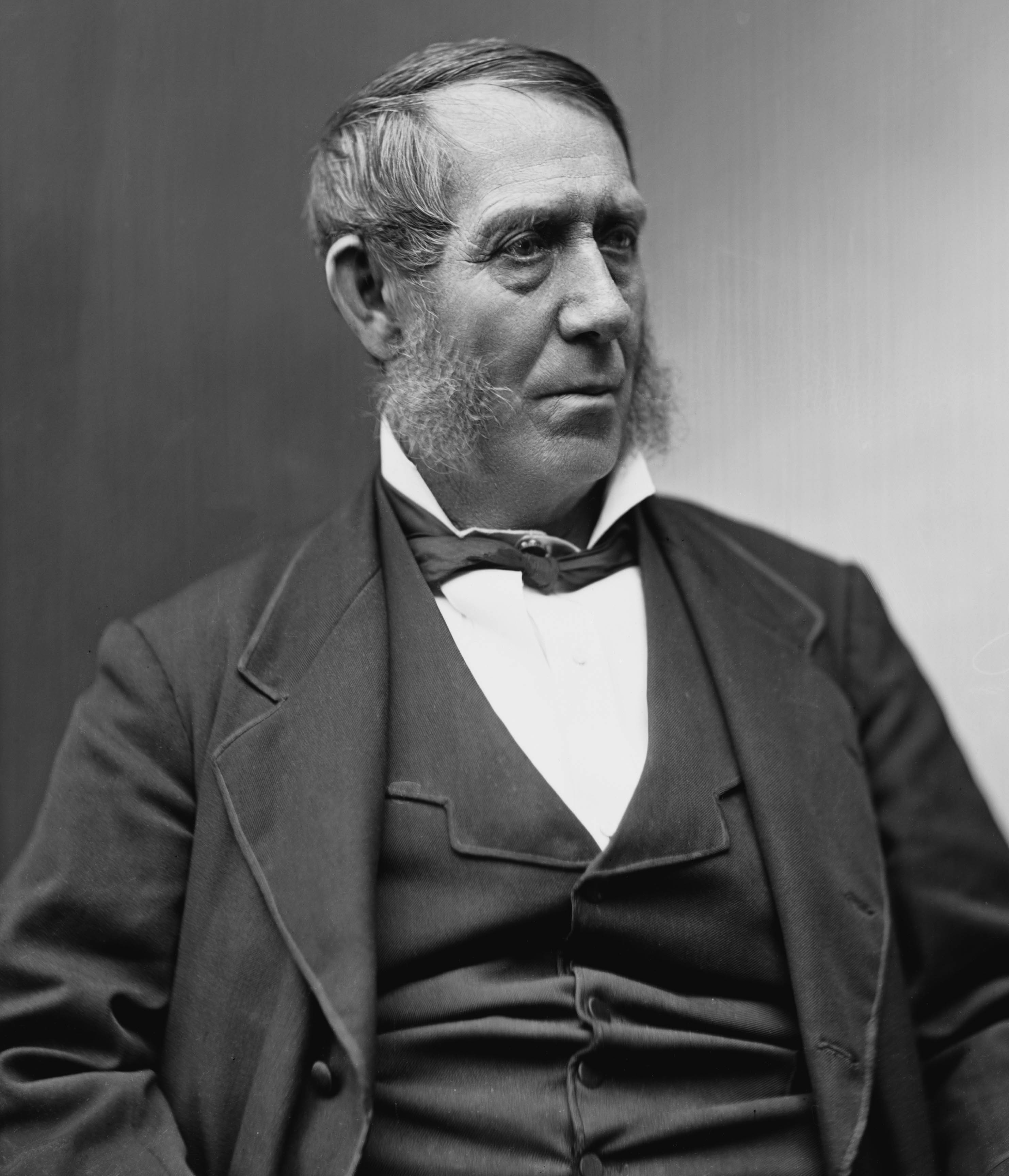 In Iowa, the term "political party" refers to political organizations which have received two percent or more of the votes cast for president or governor in the "last preceding general election". Iowa recognizes three political parties—the Republican Party of Iowa, Republican Party, the Iowa Democratic Party, Democratic Party, and the Libertarian Party (United States), Libertarian Party. The Libertarian Party obtained official political party status in 2017 as a result of presidential candidate Gary Johnson receiving 3.8% of the Iowa vote in the 2016 United States presidential election, 2016 general election. Third party (politics), Third parties, officially termed "nonparty political organizations", can appear on the ballot as well. Four of these have had candidates on the ballot in Iowa since 2004 for various positions: the Constitution Party (United States), Constitution Party, the Green Party (United States), Green Party, the United States Pirate Party, Pirate Party, and the Socialist Workers Party (United States), Socialist Workers Party.
In Iowa, the term "political party" refers to political organizations which have received two percent or more of the votes cast for president or governor in the "last preceding general election". Iowa recognizes three political parties—the Republican Party of Iowa, Republican Party, the Iowa Democratic Party, Democratic Party, and the Libertarian Party (United States), Libertarian Party. The Libertarian Party obtained official political party status in 2017 as a result of presidential candidate Gary Johnson receiving 3.8% of the Iowa vote in the 2016 United States presidential election, 2016 general election. Third party (politics), Third parties, officially termed "nonparty political organizations", can appear on the ballot as well. Four of these have had candidates on the ballot in Iowa since 2004 for various positions: the Constitution Party (United States), Constitution Party, the Green Party (United States), Green Party, the United States Pirate Party, Pirate Party, and the Socialist Workers Party (United States), Socialist Workers Party.
Voter trends
As a result of the 2010 elections, each party controlled one house of the Iowa General Assembly: the House had a Republican majority, while the Senate had a Democratic majority. As a result of the 2016 elections, Republicans gained control of the Senate. Incumbent Democratic governor Chet Culver was defeated in 2010 by Republican Terry Branstad, who had served as governor from 1983 to 1999. On December 14, 2015, Branstad became the longest serving governor in U.S. history, serving (at that time) 20 years, 11 months, and 3days; eclipsing George Clinton (vice president), George Clinton, who served 21 years until 1804. Lieutenant Governor Kim Reynolds succeeded him on May 24, 2017, following Branstad's appointment as U.S. Ambassador to China.Presidential caucus
The state gets considerable attention every four years because the Iowa caucus, gatherings of voters to select delegates to the state conventions, is the first presidential caucus in the country. The caucuses, held in January or February of the election year, involve people gathering in homes or public places and choosing their candidates, rather than casting secret ballots as is done in a presidential primary election. Along with the New Hampshire primary the following week, Iowa's caucuses have become the starting points for choosing the two major-party candidates for president. The national and international media give Iowa and New Hampshire extensive attention, which gives Iowa voters leverage. In 2007 presidential campaign spending was the seventh highest in the country.Civil rights
In a 2020 study, Iowa was ranked as the 24th easiest state for citizens to vote in.Racial equality
In the 19th century Iowa was among the earliest states to enact prohibitions against race discrimination, especially in education, but was slow to achieve full integration in the 20th century. In the first decision of the Iowa Supreme Court—''In Re the Matter of Ralph'', decided July 1839—the Court rejected slavery in a decision that found a slave named Ralph became free when he stepped on Iowa soil, 26 years before the end of the Civil War. The state did away with racial barriers to marriage in 1851, more than 100 years before the U.S. Supreme Court would ban Anti-miscegenation laws, miscegenation statutes nationwide.Gay marriage and Iowa: Why's everyone so surprised?, Chicago Tribune, April 10, 2009 The Iowa Supreme Court decided ''Clark v. The board of directors'' in 1868, ruling that racially segregated "separate but equal" schools had no place in Iowa, 85 years before ''Brown v. Board of Education''. By 1875, a number of additional court rulings effectively ended segregation in Iowa schools. Social and housing discrimination continued against Blacks at state universities until the 1950s. The Court heard ''Coger v. The North Western Union Packet Co.'' in 1873, ruling against racial discrimination in public accommodations 91 years before the U.S. Supreme Court reached the same decision. In 1884, the Iowa Civil Rights Act apparently outlawed discrimination by businesses, reading: "All persons within this state shall be entitled to the full and equal enjoyment of the accommodations, advantages, facilities, and privileges of inns, restaurants, chophouses, eating houses, lunch counters, and all other places where refreshments are served, public conveyances, barber shops, bathhouses, theaters, and all other places of amusement." However, the courts chose to narrowly apply this act, allowing de facto discrimination to continue. Racial discrimination at public businesses was not deemed illegal until 1949, when the court ruled in ''State of Iowa v. Katz'' that businesses had to serve customers regardless of race; the case began when Edna Griffin was denied service at a Des Moines drugstore. Full racial civil rights were codified under the Iowa Civil Rights Act of 1965.
Women's rights
As with racial equality, Iowa was a vanguard in women's rights in the mid-19th century, but did not allow women the right to vote until the Nineteenth Amendment to the United States Constitution was ratified in 1920, Iowa legislature being one of the ratifying votes. In 1847, the University of Iowa became the first public university in the U.S. to admit men and women on an equal basis. In 1869, Iowa became the first state in the union to admit women to the practice of law, with the Court ruling women may not be denied the right to practice law in Iowa and admitting Arabella A. Mansfield to the practice of law. Several attempts to grant full voting rights to Iowa women were defeated between 1870 and 1919. In 1894 women were given "partial suffrage", which allowed them to vote on issues, but not for candidates. It was not until the ratification of the Nineteenth Amendment that women had full suffrage in Iowa. Although Iowa supported the Federal Equal Rights Amendment, in 1980 and 1992 Iowa voters rejected an Equal Rights Amendment to the state constitution. Iowa added the word "women" to the Iowa Constitution in 1998. After the amendment, it reads: "All men and women are, by nature, free and equal, and have certain inalienable rights—among which are those of enjoying and defending life and liberty, acquiring, possessing and protecting property, and pursuing and obtaining safety and happiness." In May 2018 Iowa signed into law one of the country's most restrictive abortion bans: the requirement that a doctor cannot perform an abortion if they can detect a fetal heartbeat, which in many cases would restrict abortions pregnancies less than six weeks old. It was struck down in January 2019, when an Iowa state judge ruled that the "fetal heartbeat" law was unconstitutional.LGBT rights
The state's law criminalizing same-sex sexual activity was repealed in June 1976, 27 years before ''Lawrence v. Texas''. In 2007, the Iowa Legislature added "sexual orientation" and "gender identity" to the protected classes listed in the Iowa Civil Rights Act. On April 3, 2009, the Iowa Supreme Court decided ''Varnum v. Brien'', holding in a unanimous decision, the state's law forbidding same-sex marriage was unconstitutional. This made Iowa the third state in the U.S. and first in the Midwest to permit same-sex marriage.Culture
Arts
The Clint Eastwood movie The Bridges of Madison County (film), ''The Bridges of Madison County'', based on the popular novel of the same name, took place and was filmed in Madison County, Iowa, Madison County. What's Eating Gilbert Grape, based on the Peter Hedges novel of the same name, is set in the fictional Iowa town of Endora. Hedges was born in West Des Moines. Des Moines is home to members of the famous metal band Slipknot (band), Slipknot. The state is mentioned in the band's songs, and the album Iowa (album), Iowa is named after the state.Sports
The state has four major college teams playing in NCAA Division I for all sports. In football, Iowa State University and the University of Iowa compete in the Football Bowl Subdivision (FBS), whereas the University of Northern Iowa and Drake University compete in the Football Championship Subdivision (FCS). Although Iowa has no professional major league sports teams, Iowa has minor league sports teams in baseball, basketball, hockey, and other sports. The following table shows the Iowa sports teams with average attendance over 8,000. All the following teams are NCAA Division I football, basketball, or wrestling teams:
College sports
The state has four NCAA Division I college teams. In Division I (NCAA), NCAA FBS, the University of Iowa Iowa Hawkeyes, Hawkeyes play in the Big Ten Conference and the Iowa State University Iowa State Cyclones, Cyclones compete in the Big 12 Conference. The two intrastate rivals compete annually for the Cy-Hawk Trophy as part of the Iowa Corn Cy-Hawk Series. In Collegiate wrestling, wrestling, the Iowa Hawkeyes wrestling, Iowa Hawkeyes and Iowa State Cyclones wrestling, Iowa State Cyclones have won a combined total of over 30 team NCAA Division I Wrestling Championships, NCAA Division I titles. The Northern Iowa Panthers wrestling, Northern Iowa and Cornell College wrestling teams have also each won one NCAA Division I wrestling team title. In Football Championship Subdivision, NCAA FCS, the University of Northern Iowa Northern Iowa Panthers, Panthers play at the Missouri Valley Conference and Missouri Valley Football Conference (despite the similar names, the conferences are administratively separate), whereas the Drake University Drake Bulldogs, Bulldogs play at the Missouri Valley Conference in most sports and Pioneer Football League, Pioneer League for football.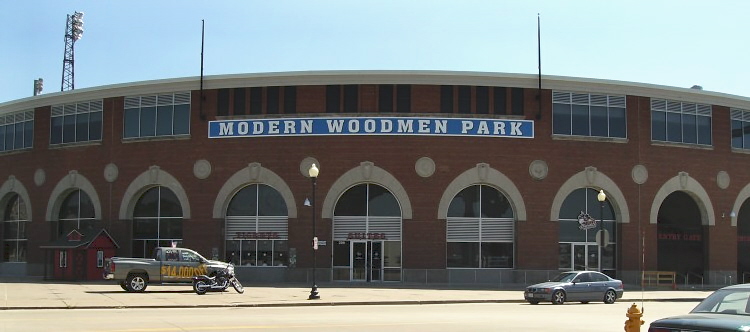
Baseball
Des Moines is home to the Iowa Cubs, a Triple-A (baseball), Triple-A Minor League Baseball team of the International League and affiliate of the Chicago Cubs. Iowa has two High-A minor league teams in the High-A Central: the Cedar Rapids Kernels and the Quad Cities River Bandits. The Sioux City Explorers are part of the American Association of Professional Baseball.Ice hockey
Des Moines is home to the Iowa Wild, who are affiliated with the Minnesota Wild and are members of the American Hockey League. Coralville, Iowa, Coralville has an ECHL team called the Iowa Heartlanders as the 2021–22 season. The United States Hockey League has five teams in Iowa: the Cedar Rapids RoughRiders, Sioux City Musketeers, Waterloo Black Hawks, Des Moines Buccaneers, and the Dubuque Fighting Saints. The North Iowa Bulls of the North American Hockey League (NAHL) and the Mason City Toros of the North American 3 Hockey League (NA3HL) both play in Mason City.Soccer
*The Des Moines Menace of the USL League Two play their home games at Drake Stadium (Drake University) in Des Moines, Iowa. *The Drake Bulldogs have a Drake Bulldogs men's soccer, men's and women's soccer team. *the Cedar Rapids Inferno Soccer Club of the Midwest Premier League play their home games at Robert W. Plaster Athletic Complex at Mount Mercy University *the Iowa Raptors FC of the USL League Two play their home games at K. Raymond Clark Field at Coe College *Union Dubuque F.C. of the Midwest Premier LeagueOther sports
Iowa has two professional basketball teams. The Iowa Wolves, an NBA G League team that plays in Des Moines, is owned and affiliated with the Minnesota Timberwolves of the National Basketball Association, NBA. The Sioux City Hornets play in the American Basketball Association (2000–present), American Basketball Association. Iowa has three professional football teams. The Sioux City Bandits play in the Champions Indoor Football league. The Iowa Barnstormers play in the Indoor Football League at Wells Fargo Arena (Des Moines), Wells Fargo Arena in Des Moines. The Cedar Rapids Titans play in the Indoor Football League at the U.S. Cellular Center (Cedar Rapids, Iowa), U.S. Cellular Center. The Iowa Speedway oval track has hosted auto racing championships such as the IndyCar Series, NASCAR Nationwide Series and NASCAR Truck Series since 2006. Also, the Knoxville Raceway dirt track hosts the Knoxville Nationals, one of the classic sprint car racing events. The John Deere Classic is a PGA Tour golf event held in the Quad Cities since 1971. The Principal Charity Classic is a Champions Tour event since 2001. The Des Moines Golf and Country Club hosted the 1999 U.S. Senior Open and the 2017 Solheim Cup.Sister jurisdictions
Iowa has ten official partner jurisdictions: * Yamanashi Prefecture, Japan (1960) * Yucatán (state), Yucatán, Mexico (1964) * Hebei, Hebei Province, People's Republic of China (1983) * Terengganu, Malaysia (1987) * Taiwan, Republic of China (1989) * Stavropol Krai, USSR/Russia (1989) * Cherkasy Oblast, Ukraine (1996) * Veneto, Veneto Region, Italy (1997) * Kosovo, Republic of Kosovo (2013)See also
* Index of Iowa-related articles * Outline of IowaNotes
References
External links
*State Data Center of Iowa
population, housing, business and government statistics
Iowa Travel and Tourism Division
Iowa State Facts from USDA
Energy Data & Statistics for Iowa—U.S. Department of Energy
Iowa State Databases
€”Annotated list of searchable databases produced by Iowa state agencies and compiled by the Government Documents Roundtable of the American Library Association.
* *
{{coord, 42, -94, dim:300000_region:US-IA_type:adm1st, name=State of Iowa, display=title Iowa, States of the United States Midwestern United States States and territories established in 1846 1846 establishments in Iowa, Contiguous United States